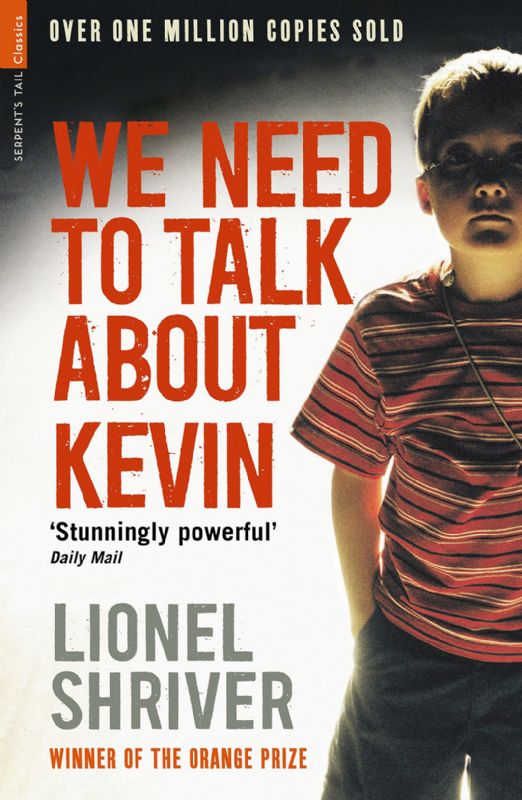- Home
- News, Articles & Reviews
- All Entertainment
- Art
- Attractions
- Book Review
- Comedy
- Culture
- Experiences
- Film
- Film Review
- Gaming
- Gaming Review
- General
- Lifestyle
- Literature
- Local Answers, Local Personalities
- Music
- Theatre
- TV
We are hiring! Please click here to join our growing magazine delivery team in Gloucestershire!
Areas
Entertainment
Archive

Book Club Picks – Victims and Perpetrators – Lionel Shriver’s ‘We Need to Talk About Kevin’ and Sarah Schmidt’s ‘See What I Have Done’
All Areas > Entertainment > Literature
Author: Rose Page, Posted: Tuesday, 23rd April 2019, 10:30
Rose Page is a Cheltenham local and college lecturer in English. She has a Masters in Modern and Contemporary Literature, Culture and Thought, as well as a Bachelors in English Literature & Philosophy.
Her monthly feature, ‘Book Club Picks’, will see Rose choose two books – one classic, one modern – with suggestions on discussion points for book clubs, as well as a brief description and comparison to other publications for more relaxed readers.
Can we call a novel written in 2003 a classic? This month’s 'classic pick' may only be 16 years old, but it is a landmark text within its (rather grim) genre.
When I saw the author, Lionel Shriver, at the Cheltenham Literature Festival a couple of years ago, she was eager to emphasise how ‘We Need to Talk About Kevin’ paved the way for other authors to tackle contemporary societal taboos. Moreover, she light-heartedly dismissed other novels that emulate her depiction of the high schooler who massacres his friends as 'derivative'.
However, I offer for comparison here a brilliant 2017 novel- Sarah Schmidt's 'See What I Have Done' – that adopts a similar premise of a possibly sociopathic youngster drawn to murder.
Nonetheless, it is written in a wholly original style and with the unique angle of historical true crime in its depiction of the 1892 Lizzie Borden murders. Both novels offer pitch-black humour and their own particular forms of domestic noir as they depict some utterly dysfunctional family lives.
The Classic Choice: 'We Need to Talk About Kevin’ – Lionel Shriver (2003)
You’ll like this if: You are interested in US politics, particularly gun law, or, alternatively, the psychology behind raising a child and the nature/nurture debate. Some critics suggest reading it as a companion to J.D.Salinger’s classic novel ‘The Catcher in the Rye'. The film version, while completely different in tempo from the novel, is also excellent and worth a watch.
What’s it about?: Shriver’s novel takes the disturbing premise of a teenager driven to carefully plan out and execute a massacre of his peers in the school gymnasium – and adds the twist that it is written entirely from his mother’s perspective.
Eva, ridden with a mixture of guilt, terror and grief, documents her life in the aftermath of the killings while concurrently recollecting episodes from Kevin’s childhood as she searches for clues of what would unfold. While she becomes somewhat of a social pariah after the murders, she also reveals herself as far from a perfect mother beforehand and, ultimately, proves herself to be an utterly unreliable narrator as we are dealt one of the most surprising, breath-taking twists of any novel I’ve ever read.
Discussion questions for your group:
• The big question – and the one you’ll probably all be asking yourselves as you read – is how responsible is Eva for Kevin’s actions? Was she too cold a mother? Too selfish? Or is she the greatest victim of all?
• Do you think Eva’s career as a travel writer (and later travel agent) is significant in a novel that depicts some stiflingly claustrophobic familial relationships? Consider her statement that she associates “maps with mastery” and Kevin's vindictive destruction of her wall of maps.
• How did you react to the novel being written in the epistolary style (i.e. as a series of letters)? What are the limitations of this form? How does it help shape our view of the narrator?
• Body parts seem important in the novel – Eva breaks Kevin’s arm in a notable incident she confesses in one letter; Kevin causes his little sister to lose her eye (and the prosthetic gains a macabre significance in the final chapter of the novel); Kevin allegedly shoots his first victim in the heart after she spurned him romantically. Can you spot any other examples? Why does Shriver focus on the body in this way?
• If you have had the chance to watch the 2011 film version, which do you think is more effective? The novel which prizes words to explain, describe and rationalise, or the sparse script of the film which relies instead on visual symbolism and sound effect to shock and trigger emotion?
• One of Kevin’s final lines is perhaps our best hope to understand his motivations and psyche. What does he mean when he declares “you don’t shoot the audience”?
The Modern Choice: 'See What I Have Done' – Sarah Schmidt (2017)
You’ll like this if: You are fascinated by true crime such as Netflix's 'Making a Murderer' or enjoy reading historical fiction set around the Victorian era, from both sides of the Atlantic. Equally, you may enjoy novels with multiple voices and perspectives such as Barbara Kingsolver's 'The Poisonwood Bible’. Fans of the popular author Gillian Flynn will also note several plot similarities to her novel 'Dark Places', which also pays tribute to the Borden legend.
What’s it about?: As with Shriver's novel, 'See What I Have Done’ opens with the aftermath of a massacre. One stifling summer’s day, Lizzie Borden finds her father and stepmother brutally slaughtered – and is soon accused of the crime.
Told from the shifting perspectives of both Lizzie herself, her sister Emma, house servant Bridget and a disreputable figure known only as 'Benjamin', a timeline for the events leading up to that terrible day begins to take shape. Strained family relationships create a dismal portrait of domestic life in the Borden house, where ghosts of past tragedies already haunt the halls. Sibling rivalry, grief for a lost mother, a controlling father and a conniving maternal uncle all set the scene for tragedy.
Discussion questions for your group:
• How old did you assume Lizzie was when reading the first few chapters? Were you surprised to be told she was a grown woman in her 30s? What initially gives us a different impression and how does this contribute to your thoughts on the extent of her guilt/responsibility for what happens?
• Schmidt's narrative style used some fantastic examples of Anthimeria (coining new words by turning nouns into verbs) – such as “Fall River miled behind us” and “Mrs Borden daughtered me along Park Street”. How many others did you spot? How does this use of Anthimeria help create imagery?
• Food – especially sweet or rotting food – plays a significant role in the text. What do you think it symbolises? Why delineate every meal the family eats?
• The tale takes place in a heatwave and the heat seems to pervade everything (consider Benjamin's description of the caved in skulls – “their heads a mess of summer hate”). How does this use of weather affect the setting and mood of the novel?
• Both the notion of victim and perpetrator are as complex in Schmidt’s novel as Shriver's. How does the perhaps peripheral character of Benjamin complicate the idea of a perpetrator? How is Lizzie a victim? Or are all – or none – of the survivors victims?
• In her afterword, Schmidt talks about visiting the Borden house when researching the novel and conveys her distaste at the way it has become a gruesome tourist attraction, complete with a BnB for ghost hunters and a gift shop selling axe earrings. However, are we readers just as guilty for finding entertainment in the story of a massacre?
• Both Kevin and Lizzie’s names have somewhat entered common lexicon, becoming bywords for unstable youngsters or familial killings (“He’s the type who would do a Kevin”...). What makes these macabre tales so memorable? Is it their use of sinister murder weapons – bows and axes? The feeling that Kevin encapsulates the amorality and volatility of a generation? Or that Lizzie represents the ultimate in betrayal in her act of parricide?Other Images
Copyright © 2024 The Local Answer Limited.
Unauthorized use and/or duplication of this material without express and written permission from this site's author and/or owner is strictly prohibited. Excerpts and links may be used, provided that full and clear credit is given to The Local Answer Limited and thelocalanswer.co.uk with appropriate and specific direction to the original content.More articles you may be interested in...


© 2024 The Local Answer Limited - Registered in England and Wales - Company No. 06929408
Unit H, Churchill Industrial Estate, Churchill Road, Leckhampton, Cheltenham, GL53 7EG - VAT Registration No. 975613000You are leaving the TLA website...
You are now leaving the TLA website and are going to a website that is not operated by us. The Local Answer are not responsible for the content or availability of linked sites, and cannot accept liability if the linked site has been compromised and contains unsuitable images or other content. If you wish to proceed, please click the "Continue" button below:




